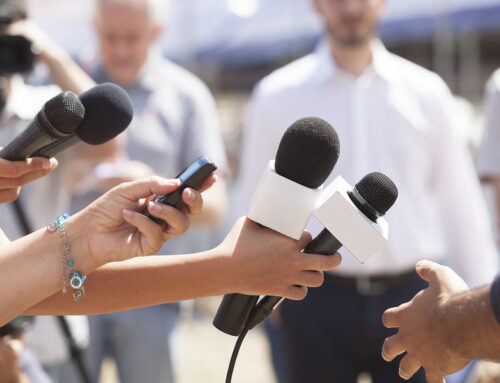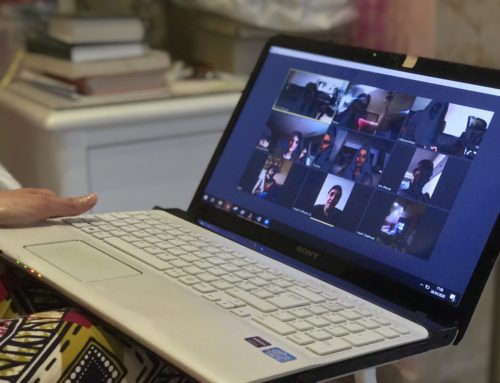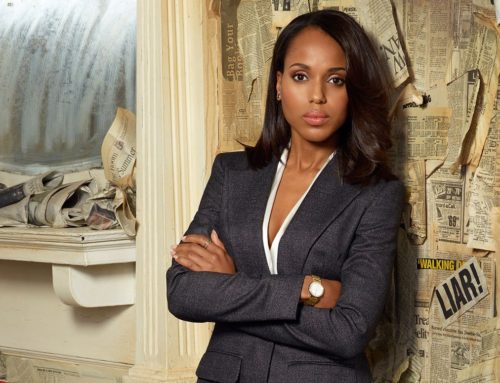Most nonprofit media relations advice focuses on the mechanics of pitching your story or how to build relationships with reporters. That overlooks an unseen — and equally important — part of media relations: preparation.
Preparation is a key ingredient of effective media relations and it’s crucial to make sure that anyone who is speaking to a reporter on behalf of your organization is ready to shine when cameras or tape recorders start rolling.
Every time someone is speaking for your nonprofit, that person should be equipped with a clear sense of what they should say, have an understanding of who they are speaking to and the outlet that he or she is representing.
I like to prepare interview subjects by scheduling a short meeting in which we provide background information, discuss key messages, and answer their questions. For some particularly important opportunities, it’s also helpful to conduct a mock interview to help the interview subject get in the right mindset for the conversation.
We also create a briefing memo, containing as much key information as we can provide. This memo, which usually covers 2-3 pages, gives the interview subject an opportunity to prepare for the interview privately — and provides a sense of comfort.
My firm’s briefing memos follow a common format, which makes it easy for our team to generate them quickly (which is especially useful when you’re preparing for an interview that is being conducted on a short deadline).
If your nonprofit doesn’t already, it’s important to have a process for developing these briefings — as it will help ensure that your spokespeople are properly prepared.
To help you get started, you can follow the format we use for our memos, which include six key sections. They include:
An Introduction
A briefing memo typically begins with a sentence or two that provides high-level information about the media opportunity — including the name of the reporter(s) you’ll be talking to, the outlet they represent, and why the opportunity is important. This information can be brief, but it helps orient the speaker for the opportunity.
Timeline and Location
It’s helpful to include the most vital information at the top of your memo for quick reference.
Our memos always include the location of the interview (including the street address and any important directions). If your interview subject is meeting with a reporter in his or her newsroom, make sure you not only provide the address of the news outlet, but you provide information about what to do when the subject arrives.
We also include a detailed timeline, including when to leave for the meeting, who is accompanying the subject to the meeting, and how to contact both the reporter and anyone from your team who might be joining.
For phone interviews, we include information about who is calling who, the expected duration of the call, and whether it will be recorded.
Interview Format
Next, we detail the format for the interview — spelling out whether it will be a one-on-one interview or with a group or editorial board. We also spell out the objective of the interview. In some cases, the objective might be to help land a feature story, or to provide opinion or context for a story the reporter is already working on. In other cases, it might be to meet with the editorial board of a newspaper to persuade the paper to take a stand on an important issue.
Here’s an example from a recent briefing memo we put together for an expert source who was meeting with a reporter at The Wall Street Journal:
“Unless otherwise agreed, this meeting will be considered on the record, but will be informational in nature. Our expectation is that it will position you as a key source and that it will spawn future opportunities for coverage in The Wall Street Journal.”
Key Messages
Once we’ve established the ground rules and the format, we typically create a short list of 2-4 key messages for the interview subject. These messages are usually quite specific — and generally correlate to a set of talking points that we hope they will focus on.
If you’re hoping to promote a new program or raise awareness about a key issue, this is where you can provide some focused advice to your subject on what he or she should be focusing on — and how to direct the conversation.
Background on the reporter/outlet
It always helps the interview subject to have as much information as possible about the reporter(s) involved in the interview. We generate short bios of the reporters, along with links to some of their recent stories so the subject can get a sense of who they are talking to and how they typically approach their work. When possible, we include a photo to put a face on the reporter.
This background information usually helps put the subject at ease (and in some cases helps prepare them for tough questions). We’ve also found that this information can help give the interview subject some information to help break the ice. Often, they can compliment a recent story or start the conversation with a shared interest (we’ve had interview subjects discover that they share the same hometown or alma mater as the reporter, for instance, and use that shared experience as an ice breaker before the interview).
Potential Questions
When possible, we aim to provide a list of questions/topics that we expect the reporter to focus on during the interview. Often, we try to gain as much information as we can from the reporter ahead of time to get a sense of what he or she is interested in covering and supplement what we learn by reading their recent coverage of similar topics and, when appropriate, information from a pitch that we’ve developed on the topic.
While we have a general format for our briefings, you can develop a format that works best for your team. The most important thing, though, is to make sure you do everything you can to prepare your spokespeople for every interview.
This will help ensure you’re conveying the right message — and that you’re ready for tough questions when they come.






